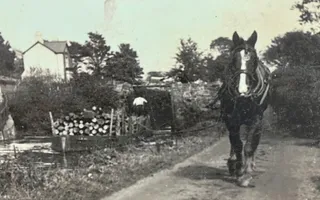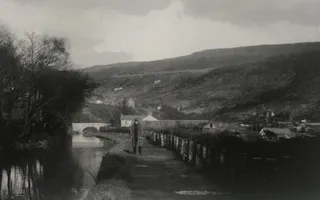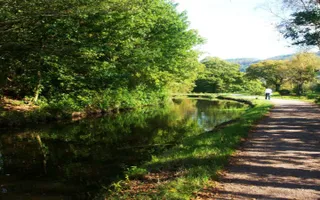Read this page in Welsh / Darllenwch y dudalen hon yn Gymraeg
The story of the Swansea Canal
For over 200 years the Swansea Canal has served the people of Swansea, providing a valuable transport route, plus water and power, for trade and industry.

From its beginning in the 1790s, its heyday inspiring the growth of industry in Swansea in the 1800s, its decline from the competition of the railways, to its revival that's continuing today thanks to the work of Glandŵr Cymru, the Canal & River Trust in Wales, and the Swansea Canal Society - discover more about the story of the Swansea Canal and its fascinating history below.
1793 - A new canal for Swansea
A public meeting was held to raise subscriptions for a new canal to transport coal from the mines in the hills above the River Tawe down to the small port of Swansea. Imported copper ore could also be carried back to the smelter works a short distance inland from the coast. There was enthusiastic support for this proposal and in the following year, 1794, an Act of Parliament was successfully passed. This authorised the construction of the joint Swansea and Trewydffa Canals, running up the valley to Abercraf, a distance of sixteen and a half miles.

1796 - Construction
Using direct labour to build the canal, work went well. Within two years the engineers in charge, Charles Roberts and Thomas Sheasby, were able to open the first section from Swansea to Godre'r-Graig. By October 1798 the whole canal had been completed with a total of 36 locks and 5 aqueducts. It terminated in a basin and dock at Hen Neuadd in the parish of Abercraf. The main water supply was provided by a feeder channel from the River Tawe a mile further up the valley.

1830 – The canal's heyday
The Swansea Canal provided a far superior means of transport over the journey by road, with barges able to carry loads of 22 tons on each trip. Horse-drawn tramways linked the quarries and collieries on the hillsides to canalside wharves. Ynyscedwyn Ironworks and Waun Coed Colliery were served by their own short branch canals. Many new industries also grew up along the route such as Pontardawe Brewery and Ystalyfera Ironworks in the 1830s and Ynysmeudwy Pottery in 1844.

1850 – Railway competition
In the 1840s canal company income was affected by a depression in the valley industries and the need to lower tolls to deter a threat from the railways. Business did prosper again when shipping facilities in Swansea were greatly improved by the completion of the North Dock in 1852 with a connecting branch canal. However, over the following years railway competition became more serious and the iron industries declined, forcing progressive lowering of the tolls. Eventually in 1873 the canal company gave way and agreed a sale to the Great Western Railway.

1880 – Signs of decline
One of the reasons for the GWR purchase of the canal was to put pressure on their rivals the Swansea Vale Railway. Consequently, shipments of coal down to Swansea were increased and canal receipts actually rose over the next decade. It wasn't until 1895 that the canal recorded a loss for the first time as the spreading railway network attracted more and more of its trade. The one highlight in this period was the construction of Bruner Mond's nickel refinery at Clydach in 1902, which depended on the canal as a source of water for the refining process.

1900 - Closures
In the early years of the twentieth century commercial trade on the Swansea fell away rapidly and after 1904 only the lower six miles remained in use. The very last barge to be built on the canal was the Grace Darling at Godre'r-Graig boatyard in 1918. Within twelve years commercial traffic had ceased altogether and sections of the canal were gradually closed and abandoned.

1948 - Nationalisation
When the railways and canals were nationalised in 1948 the Swansea Canal was transferred from the GWR to the British Transport Commission. Although commercial traffic had ceased, the canal still needed to be maintained to provide a water supply for businesses like the Mond Nickel Works. A few boats continued to use the canal as well and the last recorded horse-drawn boat trip wasn't until 1958. After that, further closures seemed inevitable.

1962 - Revival
By the time the canal was transferred to the newly formed British Waterways only 5 miles was left in water. However, canal restoration led by volunteers was gaining momentum across Britain and 1981 saw the creation of the Swansea Canal Society. Their valiant efforts over the next 40 years have transformed hopes for the canal. A final chapter came in 2012 with transfer of ownership from government property to a new charity the Canal & River Trust, known in Wales as Glandŵr Cymru.

Last Edited: 23 June 2023


Stay connected
Sign up to our newsletter and discover how we protect canals and help nature thrive


